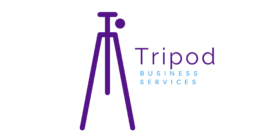Writing a blog post reminds me of cooking.
One time I decided to make a soup and decided that I didn’t need a recipe. It ended up tasting like boiled swamp water and was roughly the same colour. It was like I took the Oscar the Grouch and the contents of his garbage bin and put it in a blender.
For food to be tasty, it needs the right elements. For your blog to be read, it also needs the right ingredients.
Think of this as a recipe for an awesome blog post!
When we’re talking about blog posts, they will generally fall into two categories: informative or entertaining.
For each one, we’ll talk about elements that each blog post should have. Having those elements in place will make it so much easier to repurpose your content. (Speaking of which, have you registered for my workshop? Sign up at the form below – it’s going to be awesome!)
Let's Make Your Time Count!
Make it Count: Repurposing Your Content
January 17, 2021 at 8:00 p.m.
Thank you!
You have successfully joined our subscriber list.
Informative Blogs
Informative or educational blogs are useful in establishing your authority and helping your ideal audience realize that you’re the solution for them.
By expanding on a topic related to what you do, you’re demonstrating to your audience that you know your stuff. It’s one thing to say, “I know what I’m doing.” It’s another thing to SHOW someone that you’ve got the knowledge and experience.
Many of my blogs (like this awesome one on Power Words) are informative.
Each of these kinds of blogs should have the following elements:
- A clear theme
- A catchy intro
- Supporting content
- A motivating conclusion
- A call to action.
I’m going to go through the importance of these in a future blog post, so stay tuned for that.

Storytelling Blogs
There are two types of storytelling blogs – your story and your clients. Both have their place and can help you connect with your audience.
Telling your story is important to building an engaged audience. You may have heard it before, but I’ll say it again. People buy from people that they know, like and trust.
Telling your story begins to build that relationship and starts your audience on a journey to knowing, liking and trusting you. It makes you into an actual person and not just an online avatar.
Telling your story should contain these elements (but again, that’s a future blog post):
- How it started
- How you struggled
- How you changed
- The result
- What it means for them
Secondly, you should also tell your clients stories. This is another great way to build your authority. Instead of telling someone, “I can get you from A to B.”, you are saying, “I got this person from A to B, and I can do the same for you.”
This kind of post should have these five elements:
- How it started
- How they struggled
- How you gave a lan
- How they implemented the plan
- How they succeeded
Honestly, I could talk all day about this topic.
So are you ready to learn more about the recipe to a great blog post? AND how to repurpose it to other awesome pieces of content?
Join my workshop tomorrow because you’re going to get:
- My super cool blog templates
- A plan on how to repurpose them into tons of bonus content
- A chance to have all your content questions answered.
Let's Make Your Time Count!
Make it Count: Repurposing Your Content
January 17, 2021 at 8:00 p.m.
Thank you!
You have successfully joined our subscriber list.





